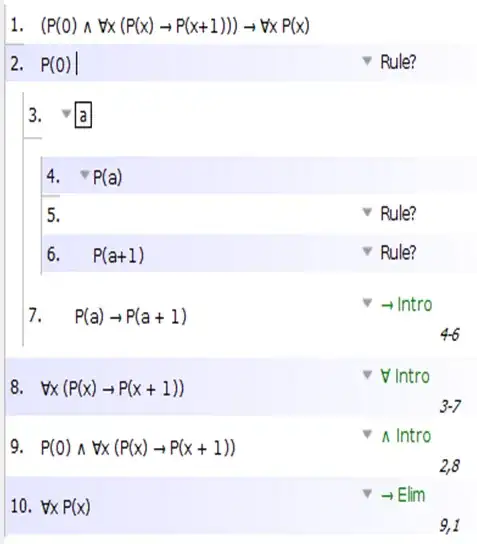I think there are two related but, as we will see, distinct worries expressed by the OP:
A. The inductive hypothesis that you use in the proof by (weak) induction seems to say exactly what you are trying to prove with induction.
B. As such, proofs by induction seem to be circular.
Let me address both of these worries:
Worry A
No, the inductive hypothesis is not the same as what induction is trying to prove.
To see this, note that for the inductive step we are trying to prove that $\forall n (P(n) \rightarrow P(n+1))$.
We do this by letting $n$ be some arbitrary number, and then we assume $P(n)$ as our inductive hypothesis (for weak induction, that is). Once we then show that $P(n+1)$, we conclude (by conditional proof) that $P(n) \rightarrow P(n+1)$. And finally, we use universal proof to say that since $n$ was arbitrary, $\forall n (P(n) \rightarrow P(n+1))$. Here is what it looks like formally:

Notice that the inductive hypothesis $P(a)$ (sorry, the software requires me to use $a$ instead of $n$) that we assume on line 4 is really quite different from the claim that $\forall x P(x)$ (again, sorry, the software requires me to use $\forall x P(x)$ instead of $\forall n P(n)$) that you end up with at the end of your inductive proof on line 10.
Indeed, if the inductive hypothesis was that $\forall n P(n)$, then we could immediately conclude that $P(n+1)$! But that doesn't happen of course. All we assume is that $P(n)$, so it will take some work to go from there to $P(n+1)$.
Worry B
Again, you don't have to worry. Please note the following important distinction between two kinds of assumptions:
Assuming something as an original premise at the start of the proof
Making additional assumption during your proof (as part of, say, a conditional proof or proof by contradiction).
If we were to assume $\forall n P(n)$ as an original premise, then yes, we would be doing circular reasoning by using that to prove $\forall n P(n)$.
But if we assume $\forall n P(n)$ as an additional assumption to set up, say, a conditional proof, then all we are going to get from that is a conditional of the form $\forall n P(n) \rightarrow \phi$ with $\phi$ being whatever you would be able to infer with the use of this additional assumption $\forall n P(n)$. You would not get $\forall n P(n)$ by itself out of that, and so no, doing that is not circular reasoning ...
As the skeleton above shows, the inductive step follows the latter pattern, as it assumes $P(n)$ as an additional assumption, not as an original assumption.
In fact, as a special case, we could of course conclude $\forall n P(n)$ on the basis of $\forall n P(n)$ within a conditional proof... but all it would give us is in the end is $\forall n P(n) \rightarrow \forall n P(n)$, which is an information-less tautology, and not at all the same as $\forall n P(n)$. Likewise, in the proof skeleton above I could of course infer $P(a)$ (instead of $P(a+1)$) on the basis of the assumption $P(a)$, but all that would give me in the end is $\forall x (P(x) \rightarrow P(x))$, which is yet again a meaningless tautology.
In sum, then, the inductive assumption is not the same claim as the claim that we are trying to prove, and even if it were, it would still not be circular reasoning. So both worries are nothing to worry about!
Finally, while nothing to worry about, I can certainly understand your worries about weak induction, because it feels like we're proving that "any arbitrary $n$ has property $P$ by at some point assuming that some arbitrary $n$ has property $P$"! Is there maybe a way to get rid of, or at least alleviate, this feeling of circularity?
In think there is, and in order to do so, let me first point out that strong induction does not have this same feeling of circularity, as its inductive assumption is 'suppose $P(m)$ is true for all $m$ smaller than $n$'. That is, by making reference to the numbers other than $n$, one does not get the feeling that we are somehow proving that $n$ has property $P$ assuming $n$ has property P.
But notice that the inductive step in weak induction can be understood this way as well: we show that a number $n$ has property $P$ on the basis of its previous number having property $P$. Therefore, I think it may help to alleviate feelings of circularity by characterizing the weak induction step as going from $n-1$ to $n$ (for $n>0$ of course), rather than as going from $n$ to $n+1$. Same idea of course, but maybe a little easier to accept conceptually.
